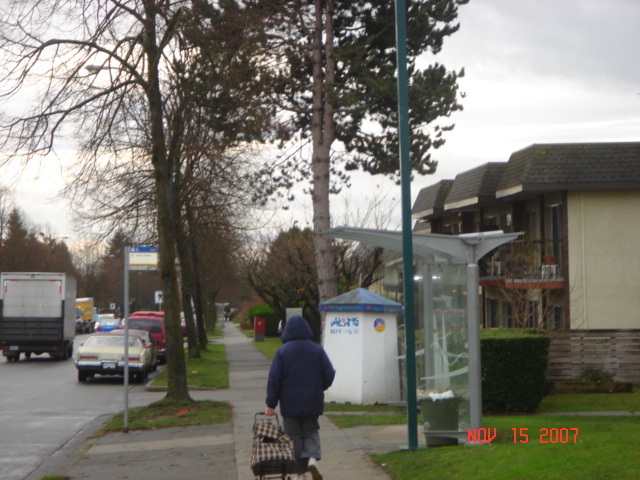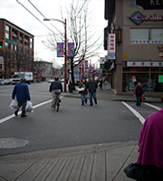SOURCES
Clifton, K., & Kreamer-Fults, K. (2007). An examination of the environmental attributes associated with pedestrian–vehicular crashes near public schools. Accident Analysis & Prevention, 39(4), 708-715.
Hagel, B., Lamy, A., Rizkallah, J., Belton, K., Jhangri, G., Cherry, N., et al. (2007). The prevalenc e and reliability of visibility aid and other risk factor data for uninjured cyclists and pedestrians in edmonton, alberta, canada. Accident Analysis & Prevention, 39(2), 284-289.
Hameed, Morad Dr. Program Director, Postgraduate Education, UBC Division of General Surgery. Personal Interview. September 2007
Hart, D. (2007). Cities design for pedestrian safety. American City & County, 122(8), 20-22.
Helbing, D., Buzna, L., Johansson, A., & Werner, T. (2005). Self-organized pedestrian crowd dynamics: Experiments, simulations, and design solutions. Transportation Science, 39(1), 1-24.
Hewson, P. (2005). Epidemiology of child pedestrian casualty rates: Can we assume spatial independence? Accident Analysis & Prevention, 37(4), 651-659.
ICBC Motor Vehicle Branch. (2005). Traffic collision statistics: Police-attended injury and fatal collisions. Retrieved Nov 17, 2007, from http://www.icbc.com/library/research_papers/traffic/pdf/traffic_collision_statistics_2005.pdf
Li, L., Zhu, L., & Sui, D. (2007). A GIS-based bayesian approach for analyzing spatial–temporal patterns of intra-city motor vehicle crashes. Journal of Transport Geography, 15(4), 274-285.
Lord , Sarah Dr. Resident, Trauma Services. Vancouver General Hospital. Personal enterview. October 22, 2007.
Loukaitou-sideris, A., Liggett, R., & Sung, H. (2007). Death on the crosswalk: A study of pedestrian-automobile collisions in los angeles. Journal Of Planning Education And Research, 26(3), 338-351. doi:10.1177/0739456X06297008 Urban Studies & Planning: A SAGE Full-Text Collection database. http://www.csa.com/ids70/gateway.php?mode=pdf&doi=10.1177%2F0739456X06297008&db=sageurb-set-c&s1=4797104ced6da9be27779e0062df708b&s2=716f3d5a3915254a2797b9153c4e9e01
Mitchell, C. G. B. ". (2007). Old world ways. Public Roads, 70(5), 1-1.
Noland, R., & Quddus, M. (2004). A spatially disaggregate analysis of road casualties in england. Accident Analysis & Prevention, 36(6), 973-984.
Retting, R. A., Ferguson, S. A., & McCartt, A. T. (2003). A review of evidence-based traffic engineering measures designed to reduce pedestrian--motor vehicle crashesAmerican Public Health Association.
Schneider, R., Ryznar, R., & Khattak, A. (2004). An accident waiting to happen: A spatial approach to proactive pedestrian planning. Accident Analysis & Prevention, 36(2), 193-211.
Steenberghen, T., Dufays, T., Thomas, I., & Flahaut, B. (2004). Intra-urban location and clustering of road accidents using GIS: A belgian example. International Journal of Geographical Information Science, 18(2), 169. Retrieved October 15, 2007 from http://www.informaworld.com/10.1080/13658810310001629619
Trauma organization. Retrieved Nov 18, 2007, from http://www.trauma.org/index.php/main/article/383/
Wang, S., & Smith, P. J. (1997). In quest of ‘forgiving’ environment: Residential planning and pedestrian safety in edmonton, canada. Planning Perspectives, 12(2), 225-250.


